 |
 |
 |
 |


What is the TMJ?
 You
may not have ever heard of it, but you use it hundreds of times every
day. It is the Temporo-Mandibular Joint, the joint where the mandible
(the lower jaw) joins the temporal bone of the skull, immediately in front
of the ear on each side of the head. Each time you chew you move it, but
you also move it every time you talk and every time you swallow (every
minutes or so). It is, therefore, one of the most frequently used of all
the joints of the body.
You
may not have ever heard of it, but you use it hundreds of times every
day. It is the Temporo-Mandibular Joint, the joint where the mandible
(the lower jaw) joins the temporal bone of the skull, immediately in front
of the ear on each side of the head. Each time you chew you move it, but
you also move it every time you talk and every time you swallow (every
minutes or so). It is, therefore, one of the most frequently used of all
the joints of the body.
You can locate that joint by putting your finger on the triangular structure in front of your ear. Then move your finger just slightly forward and press firmly while you open your jaw all the way open and shut. The motion you feel is in the TMJ. You can also feel the joint portion if you put your little finger down into your ear canal with the fingernail backwards. Then press forward as you open and close your jaw again.
These maneuvers can cause considerable discomfort to a patient who is having TMJ trouble, and doctors do this to patients for diagnosis.
TMJ Dysfunction or Disorder
TMJ Dysfunction or TMJ Disorder (also called simply TMJ) is a condition that occurs when the TM joint is misaligned or malfunctioning in some way that subjects it to excess pressure. The condition was first identified in 1934 by an otolaryngologist Dr. J.B. Costen.
Costen was the pioneer in alerting the medical and dental professionals to the fact that ear, head and neck pain could be eliminated by correcting an improper bite and removing excess pressure on the TMJ.
According to the American Dental Association, approximately 75 million people in the United States are affected by TMJ dysfunction. Most studies showing at least 35% of the population as having TMJ disorders.
How Does TMJ Dysfunction Feel?
There are 68 pairs of muscles above and below the jaws. Together these muscles are in 24 hour use in speaking, swallowing, eating, breathing and maintaining the head upright on the shoulders.
TMJ is not only felt in the joint itself but results in pain in many of these associated muscles. Headaches, ear pain, facial pain and neck pain are the common symptoms. Often there is difficulty in opening the mouth and clicking of the TMJ. It's a bit like having a stone in your shoe, not only does your foot hurt, but your ankles, legs and back become painful as the boxy tries to keep off the painful spot. TMJ dysfunction causes widespread and variable pains. The Journal of the American Medical Association describes it as the 'great impostor because it mimicks many different diseases and has such a wide variety of symptoms'
| Test these areas for muscle tenderness | ||
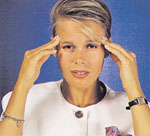 |
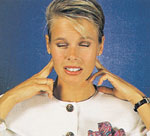 |
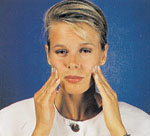 |
| Temporalis | Lateral Pterygoid | Masseter |
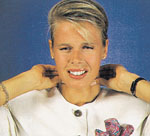 |
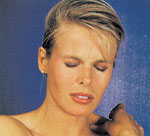 |
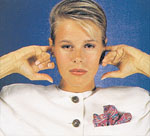 |
| Sternocleidomastoid | Trapezius | Temporo-Mandibular Joints |
| Retest with TMJ Appliance in place | ||
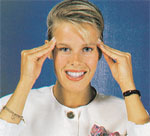 |
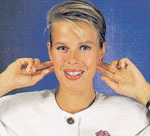 |
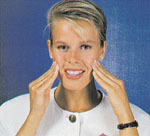 |
| Temporalis | Lateral Pterygoid | Masseter |
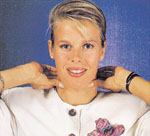 |
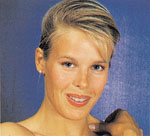 |
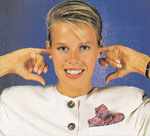 |
| Sternocleidomastoid | Trapezius | Temporo-Mandibular Joints |
Causes of TMJ
TMJ Dysfunction can be caused by forces that overloads the joints (TMJ's). This can be anything from an incorrect swallowing pattern from childhood, a bad bite from misaligned teeth, missing teeth, old dentures or a trauma such as a fall or car accident. (TMJ, very commonly occurs with whiplash injuries). Tension resulting in clenching and grinding of teeth is a common cause as it overloads the TMJ and the 68 pairs of muscles simultaneously.
Treatment of TMJ
Whatever the cause or severity of TMJ the most effective approach is to use initially a soft dental splint to 'decompress the temporo-mandibular joints', decrease muscle tension and limit the effects of clenching and grinding of the teeth. Adjunctive therapy on the muscles is very helpful. Following this, the causes need to be addressed if pain is not resolved.
Hard dental splints worn 24 hours a day, made to correctly align the bite, have shown to be most effective. It is important that they are constructed to the exact bite and adjusted regularly as structural changes take place. Professional Therapy on the muscles and to align the spine is advisable. Stress reduction may be helpful. Permanent changes to the bite with orthodontics or crown and bridgework may be required for long term pain relief. TMJ dysfunction should be treated with regular consultation from your doctor or health care therapist.
| Home
|
| The Pre-Orthodontic Trainer | The
Trainer for Braces |
| The TMJ Appliance | New Products
|
Patent No. 5 259 762